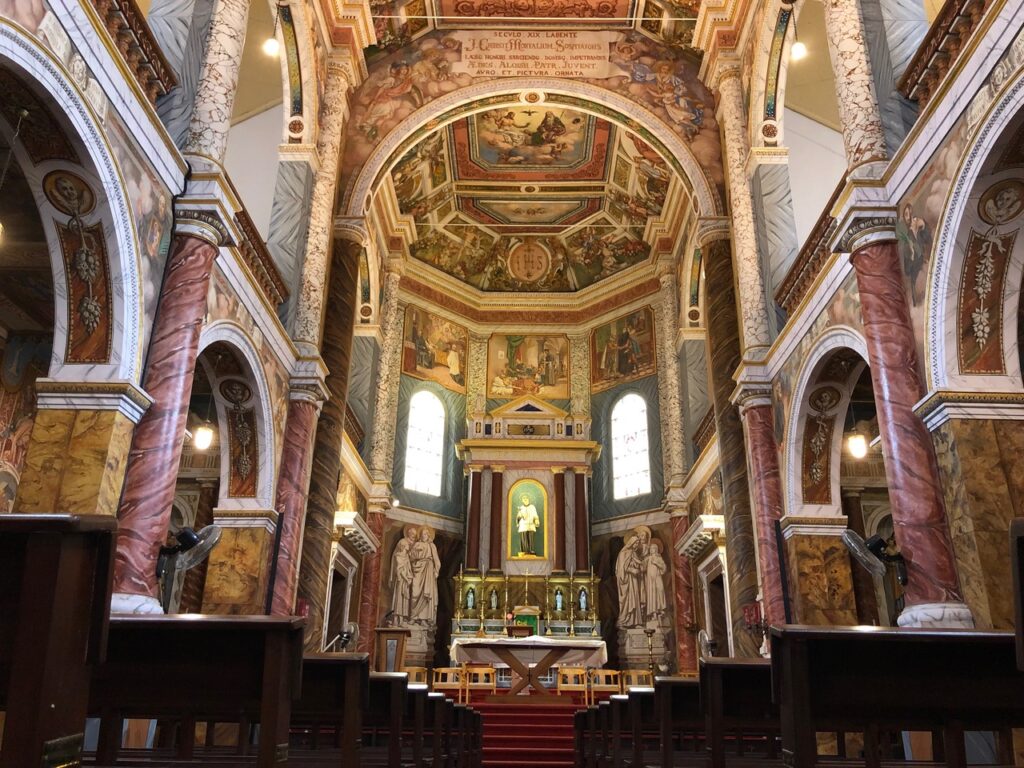
Imagine spending hours every day suspended on scaffolding or lying on your back with a brush in hand, on a plank of wood high above the ground against the ceilings, painstakingly portraying the beautiful creation of the Almighty.
Imagine doing this as an act of devotion, without expecting any worldly rewards, not for a year or two, but for decades, painting one church after another across Europe and then in India.

be a replica of Rome’s Sistine Chapel. (Photo: Shafaat Shahbandari)
Such was the life of Italian Jesuit artist Antonio Moscheni. No, not just life, he died doing what he loved most – painting and bringing portraits to life in the Cochin Cathedral. In death, he is more loved and admired than when he was alive.
In Mangaluru’s 140-year-old St. Aloysius Chapel he has left a remarkable account of not just his supreme skills but also his indefatigable dedication to his art and faith.
His feat stands out further when we consider how far he travelled to give expression to his art.

panels on either side portray the 12 apostles. (Photo: Shafaat Shahbandari)
Hailing from the village of Stezzano near Milan, Moscheni got trained in the famed Accademia Carrara of Bergamo and earned his recognition as a world-class painter when he embellished the Sanctuary of Madonna Del Campo in Bergamo, Italy.
When Moscheni joined the Society of Jesus, he was deputed to paint churches in many distant places, including in Albania and Piacenza. But, his biggest challenge came in the form of St. Alyosius Chapel in Mangaluru.
When Moscheni arrived in Mangaluru in 1899, not only had he travelled far to express his talents, but he was also in alien territory, facing the hot and humid weather conditions of Mangaluru.

St. Aloysius Chapel in just over two years. (Photo: Shafaat Shahbandari)
Not only did he acclimatise well to the weather, but he also contended with the lack of resources to carry out his task in a small town where hardly anyone spoke his language.
Despite a plethora of challenges, he completed more than 800 square metres of artwork in just over two years, bringing to life great stories of dedication and sacrifice in the face of great adversities.
As much as the lives of those who are portrayed on the canvases and frescoes, the life of the one who depicted them through his fine strokes shines through in the chapel.

to whom this institution and chapel are dedicated. (Photo: Shafaat Shahbandari)
Head tilted back, as you move from one panel to another on the lively ceiling, you can imagine the artist moving with you, bringing each scene alive.
The walls, pillars and arches literally speak to you, echoing the stories of great love and devotion.
Whether or not you could appreciate and comprehend all the visual stories during your short visit to the chapel, as you walk out of the hallowed hall, you cannot help feeling overwhelmed by the exceptional imagery your eyes just feasted on!



